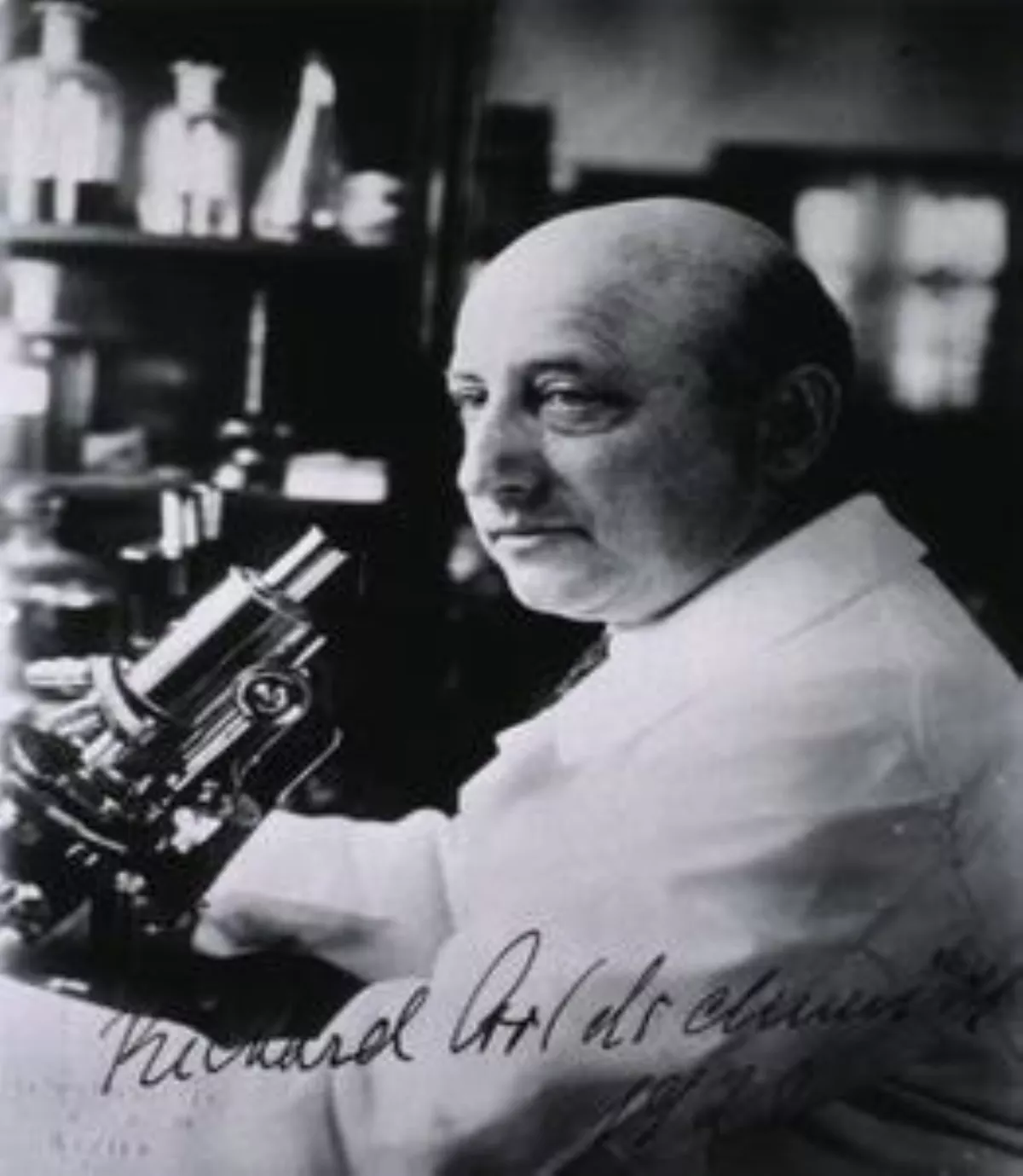 1.
1. Richard Benedict Goldschmidt was a German geneticist.

 1.
1. Richard Benedict Goldschmidt was a German geneticist.
Richard Goldschmidt is considered the first to attempt to integrate genetics, development, and evolution.
Richard Goldschmidt described the nervous system of the nematode, a piece of work that influenced Sydney Brenner to study the "wiring diagram" of Caenorhabditis elegans, winning Brenner and his colleagues the Nobel Prize in 2002.
Richard Goldschmidt was born in Frankfurt-am-Main, Germany to upper-middle class parents of Ashkenazi Jewish heritage.
Richard Goldschmidt had a classical education and entered the University of Heidelberg in 1896, where he became interested in natural history.
From 1899 Richard Goldschmidt studied anatomy and zoology at the University of Heidelberg with Otto Butschli and Carl Gegenbaur.
Richard Goldschmidt founded the histology journal Archiv fur Zellforschung while working in Hertwig's laboratory.
Richard Goldschmidt left Munich in 1914 for the position as head of the genetics section of the newly founded Kaiser Wilhelm Institute for Biology in Berlin.
Richard Goldschmidt was placed in an internment camp in Fort Oglethorpe, Georgia for "dangerous Germans".
Richard Goldschmidt was the first scientist to use the term "hopeful monster".
Richard Goldschmidt thought that small gradual changes could not bridge the divide between microevolution and macroevolution.
Richard Goldschmidt believed the large changes in evolution were caused by macromutations.
Richard Goldschmidt's ideas about macromutations became known as the "hopeful monster" hypothesis, a type of saltational evolution, and attracted widespread ridicule.
Richard Goldschmidt believed that the neo-Darwinian view of gradual accumulation of small mutations was important but could account for variation only within species and was not a powerful enough source of evolutionary novelty to explain new species.
Richard Goldschmidt is usually referred to as a "non-Darwinian"; however, he did not object to the general microevolutionary principles of the Darwinians.
Richard Goldschmidt veered from the synthetic theory only in his belief that a new species develops suddenly through discontinuous variation, or macromutation.
Richard Goldschmidt presented his hypothesis when neo-Darwinism was becoming dominant in the 1940s and 1950s, and strongly protested against the strict gradualism of neo-Darwinian theorists.
Richard Goldschmidt's ideas were accordingly seen as highly unorthodox by most scientists and were subjected to ridicule and scorn.
Richard Goldschmidt presented two mechanisms by which hopeful monsters might work.